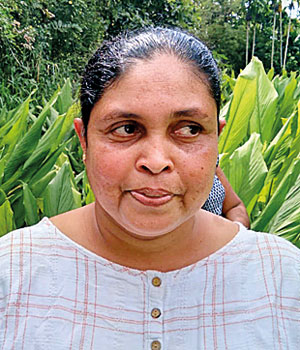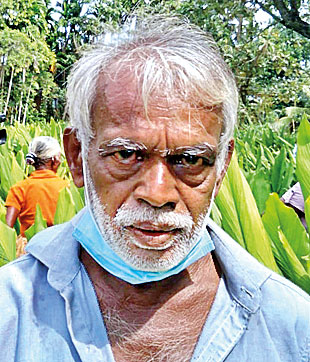News
Turmeric will remain pricey despite grow local campaign
Turmeric farmers say they will not sell their produce for less than the cost of production, despite a good harvest expected this season.

K.T. Damayanthi
Imports of the spice was banned in December 2019, along with ginger and nutmeg with claims by the government of the need support local growers. An underground market and smuggling from India emerged, and adulterated produce became common. The price of dried turmeric skyrocketed to about Rs 4,000 a kilogram.
More than two years later, turmeric farmers are complaining of financial losses due to lack of demand.
Turmeric is grown largely in Ampara, Kurunegala, Gampaha, Kalutara, Kandy, and Matale districts.
Moneragala farmer, H.B. Sirisena, said that a kilogram of raw turmeric root costs Rs 150.
Farmers had bought seedlings at Rs 3,000 he said, and dried turmeric is being sold at Rs 6,000 per kilo.
Now, farmers, including some who say they are in debt, are not eager to grow anymore. The crop will be harvested in March. Farmers say their costs were high when they began planting. Farmers in Namal Thalawa, 5 B Colony, have grown more than 1,000 acres of turmeric.
Nayana Nada in Namal Thalawa said: “The government’s ban on chemical fertiliser has heightened our concerns. We bought fertiliser at Rs 450 per 20 kilos, and seedlings at Rs 500 to Rs 550. In a situation like this how can we sell at Rs 100?’’
K.T. Damayanthi said the growers cannot sell at a fixed price when the production cost is high.
“We have invested so much in our farms, but we couldn’t sell, so we have no money.’’

R.M. Kuda Banda
She had hoped to earn good money from the crop this season, as she usually supplies her produce to local businessmen. The lockdown, however, had dashed her hopes. She noted that it was the businessmen who earned profit.
Farmer, R.M. Kuda Banda said: “Last year we received seedlings and fertiliser from the government. This year we received nothing. We had to spend every penny for this harvest. The black market will get the profits. We get nothing. I would suggest selling at a price of Rs 400 a kilo. We are now in great distress.’’
The convener of Namal Oya farmers rights association, Hemantha Kithsiri said farmers have faced many obstacles, including water shortages. He expressed concern about the difficulties farmers endure. Farmers had not got support from the government, he said. The Department of Export Agriculture which had repeatedly reassured consumers of a price drop in January 2021, now says the farmers must reduce prices.
The director Upul Ranaweera said that in December 2019 the government banned turmeric imports. A shortage caused prices to soar. As a result, 100 grams of turmeric was selling from Rs 400 to Rs 500.
The price of a kilo of turmeric increased to about Rs. 5,000, but in 2021, dropped to Rs. 3,500.
According to industry sources, the wholesale price of a kilo of raw root turmeric is between Rs. 2,200 and Rs. 2,600. However, the cost for the production stands at Rs 70 to Rs 80, so selling it at a price of Rs 150 is profitable for each farmer. 
He said the harvest produced only 30,000 metric tonnes of raw turmeric and with 5,000 metric tonnes set aside for seedlings for cultivation this year, only 25,000 metric tonnes was available for processing before they are sold to the public. When this amount is dried and cured, only about 3,500 metric tonnes of turmeric powder could be produced. For every seven kilograms of raw turmeric, only one kilogram of dried turmeric can be obtained. “We need at least 7,500 metric tonnes of dried turmeric every year to meet the country’s demand,” he said. “Even during the pandemic situation we were able to export a reasonable amount of turmeric. Farmers are not willing to reduce prices as they have spent a higher sum for the seedlings.
In Sri Lanka, agriculture has undergone a technological transformation in the last decades, making farming more convenient, efficient, and profitable.
However, farmers face a growing number of challenges and constraints that include low productivity and poor product quality. However, we are hosting workshops to educate farmers. To export turmeric to the European market you must comply with requirements on using plant resources agreed under international treaties.’’
(Additional Reporting by Nawarathna Samarathunga in Hingurana)
The best way to say that you found the home of your dreams is by finding it on Hitad.lk. We have listings for apartments for sale or rent in Sri Lanka, no matter what locale you're looking for! Whether you live in Colombo, Galle, Kandy, Matara, Jaffna and more - we've got them all!

